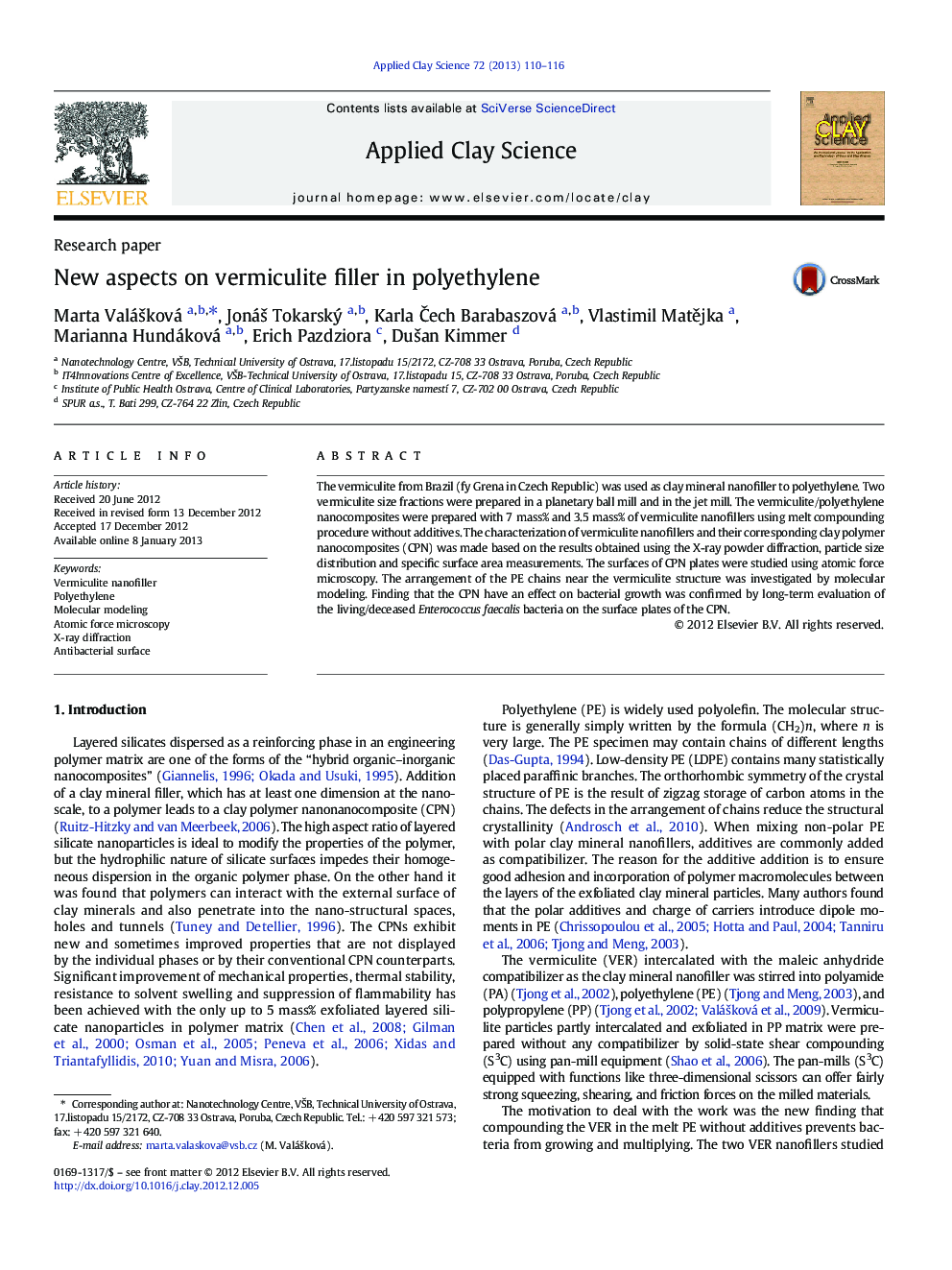| Article ID | Journal | Published Year | Pages | File Type |
|---|---|---|---|---|
| 1695106 | Applied Clay Science | 2013 | 7 Pages |
The vermiculite from Brazil (fy Grena in Czech Republic) was used as clay mineral nanofiller to polyethylene. Two vermiculite size fractions were prepared in a planetary ball mill and in the jet mill. The vermiculite/polyethylene nanocomposites were prepared with 7 mass% and 3.5 mass% of vermiculite nanofillers using melt compounding procedure without additives. The characterization of vermiculite nanofillers and their corresponding clay polymer nanocomposites (CPN) was made based on the results obtained using the X-ray powder diffraction, particle size distribution and specific surface area measurements. The surfaces of CPN plates were studied using atomic force microscopy. The arrangement of the PE chains near the vermiculite structure was investigated by molecular modeling. Finding that the CPN have an effect on bacterial growth was confirmed by long-term evaluation of the living/deceased Enterococcus faecalis bacteria on the surface plates of the CPN.
Graphical abstractFigure optionsDownload full-size imageDownload as PowerPoint slideHighlights► Vermiculite as nanofiller (VER) without additives in polyethylene (PE) ► Structural arrangement of PE chains and VER was investigated by molecular modeling. ► Surfaces of VER/PE composite plates were studied using atomic force microscopy. ► Antibacterial surface plates were confronted with VER/PE structural properties.
